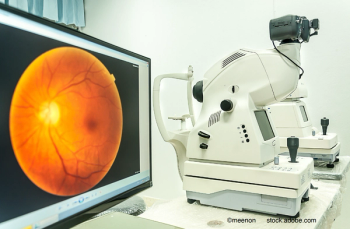
ARVO 2024: Impact of early intraretinal fluid reduction on one-year outcomes in diabetic macular edema
At this year's ARVO meeting, Dolly Chang, MD, PhD, presented data on the early fluid reduction in patients with diabetic macular edema, and how that correlates with 1-year outcome with a deep learning-based retina segmentation tool using the Phase 2 BOULEVARD study.
At this year's ARVO meeting, Dolly Chang, MD, PhD, presented data on early fluid reduction in patients with diabetic macular edema, and how that correlates with 1-year outcome using a deep learning-based retina segmentation tool using the Phase 2 BOULEVARD study.
Video Transcript:
Editor's note: The below transcript has been lightly edited for clarity.
Dolly Chang, MD, PhD:
Hi, this is Dolly Chang. I am an ophthalmologist and currently serving as a group medical director at Genentech, Early Clinical Development, gRED. Today I would like to share our latest research presented at ARVO 2024. Specifically, we are looking at early fluid reduction in patients with diabetic macular edema, and to see how that correlates with 1 year outcome. At a heart of our study, we developed a deep learning-based retina segmentation tool using our Phase 2 BOULEVARD study. And this tool enables us to analyze hundreds and thousands of OCT images much more efficiently, compared to manual segmentation. We're looking at the intraretinal fluid volume, subretinal fluid volume, total retinal thickness, inner retinal thickness and outer nuclear thickness. We categorize patients into three categories based on their response to the first dose of therapy. Patients who have greater than 50% reduction in intraretinal fluid is approximately about 45% of our patients. The second category is 20 to 50% reduction in IRF volume. And the third category is patients who have less than 20% reduction in intraretinal fluid. And what we have found is that patients with greater reduction in intraretinal fluid, by just one dose of therapy, had greater vision outcomes. In average, they gain about 12.2 letters, as compared to patients who had less than 20% reduction in fluid after one dose, and they gained 8.2 letters. The difference is four letters. That is quite significant. In addition, we are also looking at anatomical endpoints.
And we also found that those with greater reduction in intraretinal fluid after one dose also had greater reduction in total retinal thickness, inner retinal thickness and intraretinal fluid volume as well. So from this research, we found that early drying seems to be important and associated with 1 year outcome. Patients who have better trying with one dose of therapy tend to have greater fluid reduction and also better vision at 1 year. And one thing that I want to highlight is that these type of deep learning algorithms really enable us to look into, you know, imaging biomarkers that we were not able to do it before with manual segmentation. And we are going to look into the imaging biomarker further to understand the disease biology and to understand, you know, patient response to different treatments as well, in the future.
You know, this tool allows us to analyze these OCT images in greater detail. And we really want to understand, you know, who are the patients that respond to treatment better than the others, and how we can improve patient outcome in the future. So I think that you know, this, this research is great, gives us some information about early reduction in fluid, it's important. But I do want to highlight that this research is based on a clinical trial. So your patient in the clinic may be different from patients in a clinical trial. Also, at the same time, this is an average response. So you know, a patient comes into your clinic, they may have different glycemic control, they may have different background disease and all of these variables we didn't take into consideration.
So, you know, I think that this gives us a lot of information. But if your patient doesn't respond after the first dose, [that] doesn't mean that they will respond. And also at the same time all patients are continually being treated for a whole year. So, you know, we don't know what will happen if you don't treat according to the study protocol.
Newsletter
Keep your retina practice on the forefront—subscribe for expert analysis and emerging trends in retinal disease management.















































